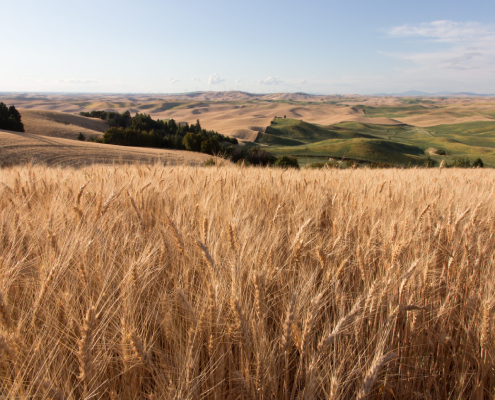By USW Deputy Director of Policy Ben Conner
After attending a series of World Trade Organization (WTO) meetings in Geneva in September, it appears to me that member representatives are at the intersection of two trends influencing agricultural trade negotiations.
First, there is growing recognition that the Doha Round approach to future trade negotiations is not viable , so some countries are casting about for new approaches, while others are digging into seemingly unworkable positions. Second, more countries understand that the policy environment has shifted dramatically since the Doha Round started in the early 2000s. Many now see that the vast majority of trade distortions in agriculture now come from developing country policies.
This second point was felt like an earthquake in Geneva when the United States initiated a first-of-its-kind dispute against China’s price supports for wheat, corn and rice. U.S. industry and government officials had been talking about the problem of advanced developing country farm subsidies for years, but it was easy to ignore as long as no one thought anything would be done. What is hard to ignore now is this: one Chinese program covering three crops provides more than $100 billion in support, which is greater than the GDPs of more than 100 WTO member countries.
Negotiators are still digesting the potential impact of that case, but everyone should know that this is not simply symbolism meant to bolster the prospects of trade agreements like the Trans-Pacific Partnership (TPP). This reflects the serious problem of developing country subsidies that must be addressed. Any new negotiations need to be based on reality, particularly this reality. We at USW believe that developing country subsidies are by far causing the greatest distortions in world wheat trade today.
Outdated frameworks, in which the least ambitious participant dominated, have bogged down negotiators for years. Now, many countries are approaching the negotiations with fresh eyes, ready to tackle specific topics and go beyond the old multilateral model.
However, that is not to say that an agricultural outcome will have the effect of opening trade in wheat. In fact, the last two agriculture agreements actually had the opposite effect.
At the Bali ministerial meeting in 2013 and the Nairobi meeting in 2015, the agricultural agreements reversed some of the progress made by the WTO Agriculture Agreement. In Bali, India and other countries negotiated language, that masquerades trade-distorting price supports as food security programs. At Nairobi, WTO members notably agreed to eliminate all export subsidies but, at the same time, granted an eight-year, unlimited exemption for certain export subsidies commonly used by developing countries in violation of the original WTO Agriculture Agreement.
The next ministerial meeting will be in Buenos Aires in 2017. There, trade ministers will be under pressure to deliver something on agriculture. Again, certain advanced developing countries will try to reverse the progress already been made on trade liberalization and protect current trade-distorting programs.
The United States has clearly sent a strong signal with the China case that not following the existing rules will no longer be ignored. The top priority in Buenos Aires should be preventing further erosion of the trade liberalizing provisions of the WTO Agriculture Agreement, even if that means no new agreement on agriculture.







